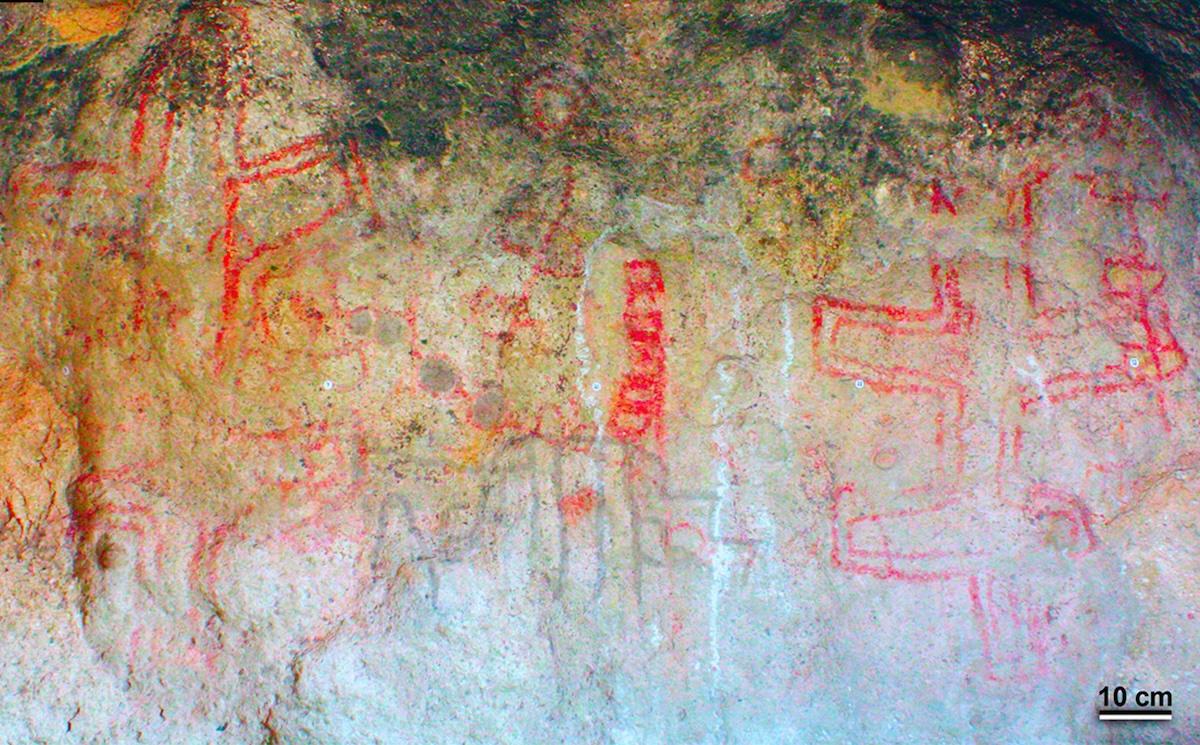
Digital enhancement with Dstretch of the complete rock art panel, via Science Advances, February 14, 2024.
Dating artifacts is crucial in archaeology as it provides invaluable insights into the timeline of human history and cultural evolution. In the remote caves of the inland desert of Patagonia, Argentina, nearly 900 paintings adorn the cave walls, which have captivated archaeologists for decades. Initially assumed to be created within the past few thousand years, a paper published on February 14 by the journal, Science Advances, confirmed that these rock formations and their carvings date back a staggering 8,200 years ago. This discovery not only redefines the timeline of artistic expression and human existence in the region but also signifies the earliest known instance of cave drawings in one of the last frontiers settled by early humans.
The article reports that field archaeologists radiocarbon dated the rock art motifs from the cave, known as Cueva Huenul I. Radiocarbon dating is a scientific measuring tool used to determine the age of organic matter, up to 60,000 years old. It is done by measuring the amount of carbon-14 present in a sample and comparing it against a reference standard isotope. The result of this particular carbon dating experiment showed that the artwork on the cave’s walls predated previous records in the region by several millennia, and encompassed over 3 ka, or about 130 human generations.
The rock and its engraved designs therefore can be dated as from the mid-Holocene epoch, an interglacial period which began approximately 11,700 years ago, following the Last Glacial Period. As the report states, the research archaeologists suggest that “this diachronic rock art emerged as part of a resilient response to ecological stress by highly mobile and low-density populations.”
The cave is located in Patagonia, the southernmost tip of South America, a geographic location that had no human habitation until about 12,000 years ago. Thus, this new dating of the cave drawings suggests that humans not only settled in the region but used designs represented in the cave to communicate with one another or record their histories for future generations during times of glacial and other climactic shifts.
The designs are mostly of human figures, animals, and abstract markings. A comb design created out of black pigment has been represented multiple times in this cave and across generations. The team of this discovery, led by Dr. Romero Villanueva, found that this black paint could have been created out of charred wood, burned from shrubs or cactuses. Though researchers don't know the meaning of the comb motif, according to the New York Times, researchers speculate that “it might have helped preserve the collective memories and oral traditions of peoples who endured this unusually hot and dry period.”




























